岚山缤纷的枫叶与竹林, 京都, 日本 Colorful maple leaves and bamboo forest in Arashiyama, Kyoto, Japan (© DoctorEgg/Getty Images)
岚山缤纷的枫叶与竹林, 京都, 日本 Colorful maple leaves and bamboo forest in Arashiyama, Kyoto, Japan (© DoctorEgg/Getty Images)
竹林吐纳清气,枫叶绚烂如火 Where bamboo breathes and maples blaze
日本京都岚山地区的枫林与竹林
今日,我们前往京都岚山地区,这里以迷人的四季风光闻名于世。此处,鲜艳的日本红枫与静谧的竹林交织出色彩与宁静的和谐画卷。这些以纤细深裂叶片著称的枫树,每逢秋日便幻化成炽烈的红、橙、金三色,吸引着全球游客纷至沓来。它们不仅因绝美姿态备受推崇,更承载着象征优雅、平和与生命无常的文化意蕴。
嵯峨野竹林同样具有标志性,高耸的真竹和毛竹在微风中轻轻摇曳。几个世纪以来,竹子一直是日本人生活中不可或缺的一部分,从建筑、手工艺到传统仪式,竹子都得到广泛应用。竹子的快速生长和韧性象征着力量和柔韧性,历史上人们种植竹林是为了抵御自然灾害。
Maple and bamboo forests in Arashiyama, Kyoto, Japan
Today, we travel to the Arashiyama district in Kyoto, renowned for its captivating seasonal landscapes. Here, vibrant Japanese maple trees and serene bamboo forests create a harmonious blend of color and tranquility. These maples, known for their delicate, deeply lobed leaves, turn fiery shades of red, orange, and gold during fall, attracting visitors from around the world. They are celebrated not only for their beauty but also for their cultural symbolism—representing elegance, peace, and the fleeting nature of life.
The Sagano Bamboo Forest is equally iconic, where towering stalks of madake and mosochiku varieties of bamboo sway gently in the breeze. Bamboo has been integral to Japanese life for centuries, used in everything from architecture and crafts to traditional ceremonies. Its rapid growth and resilience symbolize strength and flexibility, and bamboo groves were historically planted to protect against natural disasters.
日出时的东京,日本 Tokyo at sunrise, Japan (© pongnathee kluaythong/Getty Images)

日出时的东京,日本 Tokyo at sunrise, Japan (© pongnathee kluaythong/Getty Images)
把我们都算上 Counting us all in
世界人口日
我们生活的地球早已人满为患,并且仍在不断变得更加拥挤。目前全球人口已达82亿,且呈持续增长之势。世界人口日旨在引发人们对人口增长如何影响城市发展、粮食供给与未来前景的思考。该纪念日设立于1989年,聚焦于不受控的人口增长对可持续性带来的影响,其灵感源自1987年全球人口首次突破50亿的“50亿人口日”。随着城市不断扩张,绿地面积减少,农业也在有限的土地和水资源中展开竞争。然而前路并非无解:通过教育投资、改善医疗可及性,以及建设更智慧的城市,人口增长与可持续发展之间可以实现平衡。
从全球数据来看,至2025年,印度仍将是全球人口最多的国家,人口数预计超过14.6亿;其次是中国,人口约14.1亿;美国以约3.39亿人口位居第三,尽管其增长速度趋缓,人口老龄化正成为新的社会挑战。当前全球人口最多的城市是日本东京,人口约3,720万,它呈现出高密度城市生活的实际图景:空间紧张、交通拥堵,以及公共服务需求高企。世界人口日不只是人口统计,更是呼吁我们要进行具前瞻性的规划,以确保子孙后代能在资源有限的地球上能持续繁荣发展。
World Population Day
We are living in a full house, and it is getting fuller. With 8.2 billion people and counting, World Population Day highlights how that growth affects cities, food, and the future. First observed in 1989, the day focuses on how unchecked population growth affects sustainability. The event was inspired by Five Billion Day in 1987, which marked the approximate date when the global population hit that milestone. As cities expand, green spaces shrink, and agriculture competes for limited land and water resources. But there is a way forward—investing in education, improving access to healthcare, and building smarter cities can balance growth with sustainability.
On a global scale, India remains the most populous country in 2025 with over 1.46 billion people, followed by China at 1.41 billion. The United States trails with around 339 million, though its growth is slowing and aging populations are becoming a new challenge. Tokyo, the world's largest city with around 37.2 million people, illustrates the realities of high-density urban life: overcrowded spaces, transport congestion, and rising demand for services. World Population Day is more than a head count—it's a call for better planning and long-term thinking to ensure future generations can thrive on a planet with finite resources.
沿着岚山保津川行驶的火车,京都,日本 A train running along Hozugawa River in Arashiyama, Kyoto, Japan (© Alvin Huang/Getty Images)
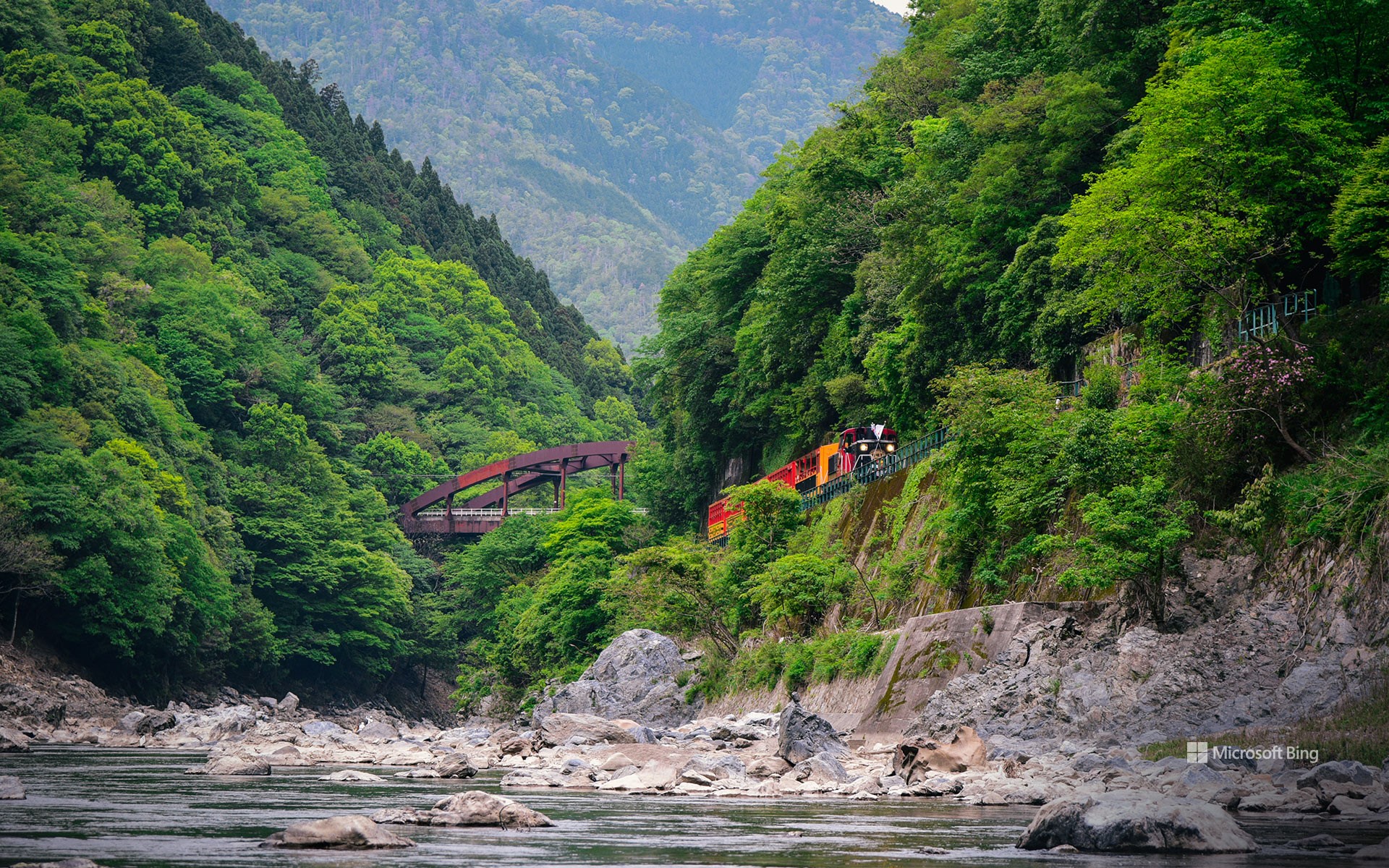
沿着岚山保津川行驶的火车,京都,日本 A train running along Hozugawa River in Arashiyama, Kyoto, Japan (© Alvin Huang/Getty Images)
山间奔驰 Running in the mountains
沿着岚山保津川行驶的火车,京都,日本
岚山四季景色各具风韵,春季樱花盛放,秋季枫叶绚丽,令人叹为观止。此地最具代表性的地标之一为渡月桥,横跨宁静的桂川,桥上可远眺群山环绕的壮丽景色。漫步于嵯峨野竹林小径,高耸的竹子随风摇曳,仿佛置身于一个神秘而静谧的世界。岚山亦坐落着宁静的天龙寺,以其精致的枯山水庭园而闻名。若希望体验难忘之旅,游客可搭乘嵯峨野观光小火车,穿越风光旖旎的保津川峡谷,沿途欣赏四季更替的自然景观。无论是寻求静谧、感受自然之美,还是希望体验京都深厚的历史文化,岚山都能为来访者留下难以磨灭的回忆。
日出时分的富士山, 河口湖, 日本 Mount Fuji at sunrise, Lake Kawaguchi, Japan (© Twenty47studio/Getty Images)
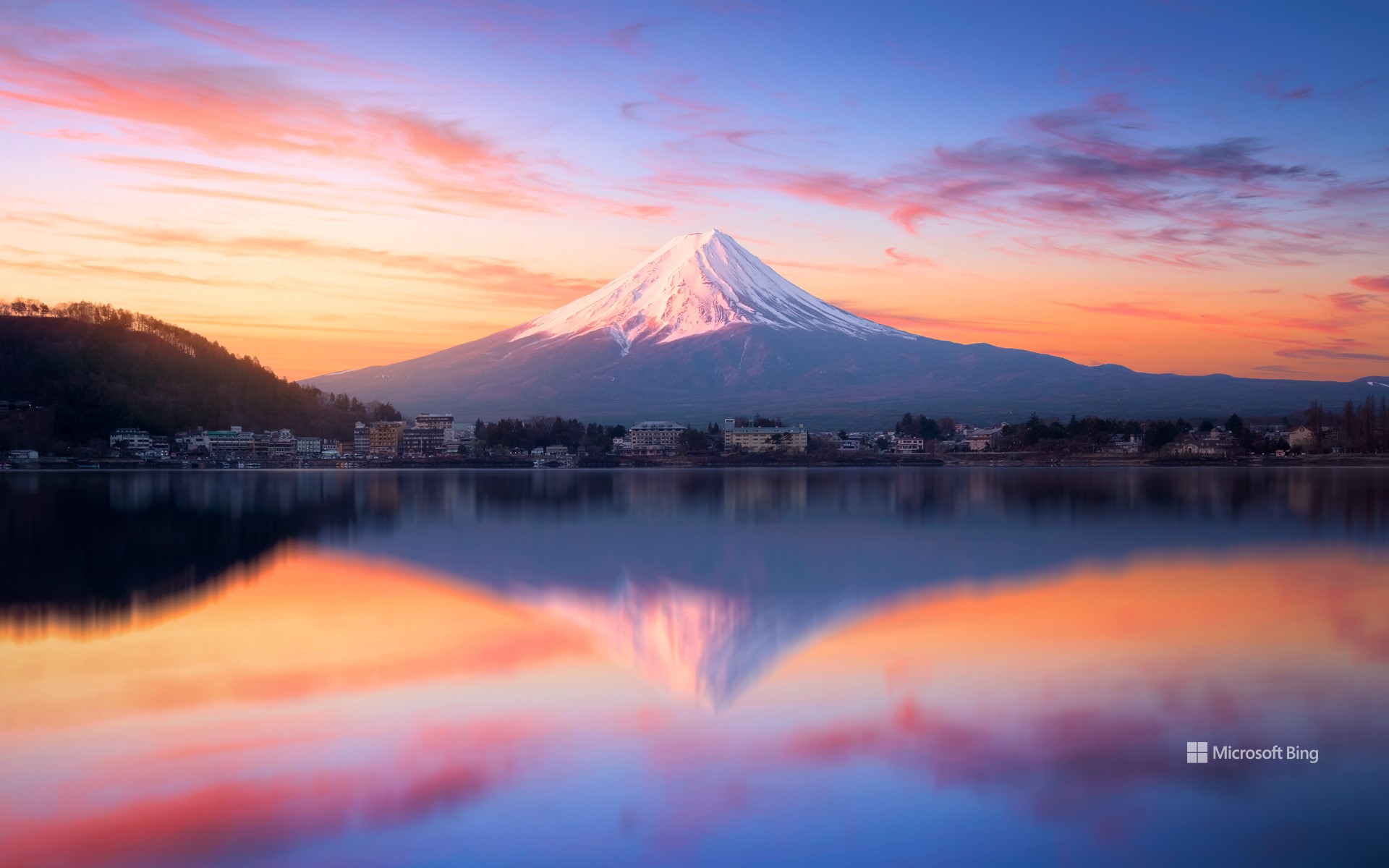
日出时分的富士山, 河口湖, 日本 Mount Fuji at sunrise, Lake Kawaguchi, Japan (© Twenty47studio/Getty Images)
清晨的美好精 Wind of Fuji, my souvenir from Edo
富士山,日本
在东京西南约 60 英里处,矗立着日本的文化象征之一:富士山。这座日本最高峰海拔近12,000英尺,其近乎完美对称的火山锥,每年约有五个月被积雪覆盖,形成壮丽景观。几个世纪以来,富士山一直被视为神圣之山。在神道信仰中,富士山被奉为本宫浅间大社的圣山,并在其视野范围内建有供奉它的神社。
Mount Fuji Day
Around 60 miles southwest of Tokyo stands one of Japan's cultural icons: Mount Fuji. The country's tallest mountain rises 12,000 feet above the surrounding landscape, with its near-symmetrical cone covered in snow for nearly five months each year. For centuries, Fujisan—as it is known in Japanese—has been worshiped as a sacred mountain. In the Shinto faith, Fuji is deified as Asama no Okami, and shrines dedicated to it are built within sight of the mountain.
February 23 is celebrated as Mount Fuji Day (富士山の日) because the word 'Fujisan' can be interpreted as '2, 2, 3.' Although it's not a national holiday, people often take the opportunity to learn more about this majestic peak. It's also a day to reflect on the future of the mountain, and how it can be preserved for future generations. Every year, more than 300,000 people climb Mount Fuji, and overtourism has become a real concern.
三十槌冰柱,秩父市,日本 Icicles of Misotsuchi, Chichibu, Japan (© watayu0821/shutterstock)

三十槌冰柱,秩父市,日本 Icicles of Misotsuchi, Chichibu, Japan (© watayu0821/shutterstock)
冰雪奇景 These are so nice-icle
三十槌冰柱,秩父市,日本
看,这就是日本秩父市的三十槌冰柱奇观!这道令人叹为观止的天然冰墙宽约98英尺,高约33英尺,由泉水沿岩壁流下结冰而成。这一景观每年仅在1月中旬至2月中旬开放,夜幕降临时还会点亮彩灯,仿佛置身于冬日童话世界。
距离东京仅两小时车程,这里是远离都市、欣赏大自然杰作、呼吸清新山间空气的绝佳去处。观赏完冰柱,不妨前往附近的大泷温泉泡温泉,这是当地人最爱的放松身心之地。秩父市的大部分地区位于或毗邻秩父多摩甲斐国立公园,观赏完点亮的冰柱后,还可继续探索周边丰富的自然景观。
The natural ice wall of Misotsuchi, Chichibu, Japan
Behold the magic of the Misotsuchi no Tsurara (Misotsuchi Icicles) in Chichibu, Japan. This breathtaking natural ice wall, nearly 100 feet wide and 35 feet tall, is formed by spring water freezing as it trickles down a rock face. The attraction is only open from mid-January through mid-February. Colored lights after dark create a scene that feels straight out of a winter fairy tale.
Just 2 hours from Tokyo, Chichibu is the perfect escape to enjoy nature's artistry and some fresh mountain air. Warm up after viewing the icicles with a soothing soak at the nearby Otaki Onsen, a popular hot spring, for relaxation. Since much of Chichibu sits in or near the Chichibu Tama Kai National Park, there’s abundant nature to see.
地肤草,茨城县,日本 Kochia, Ibaraki prefecture, Japan (© DigiPub/Getty Images)
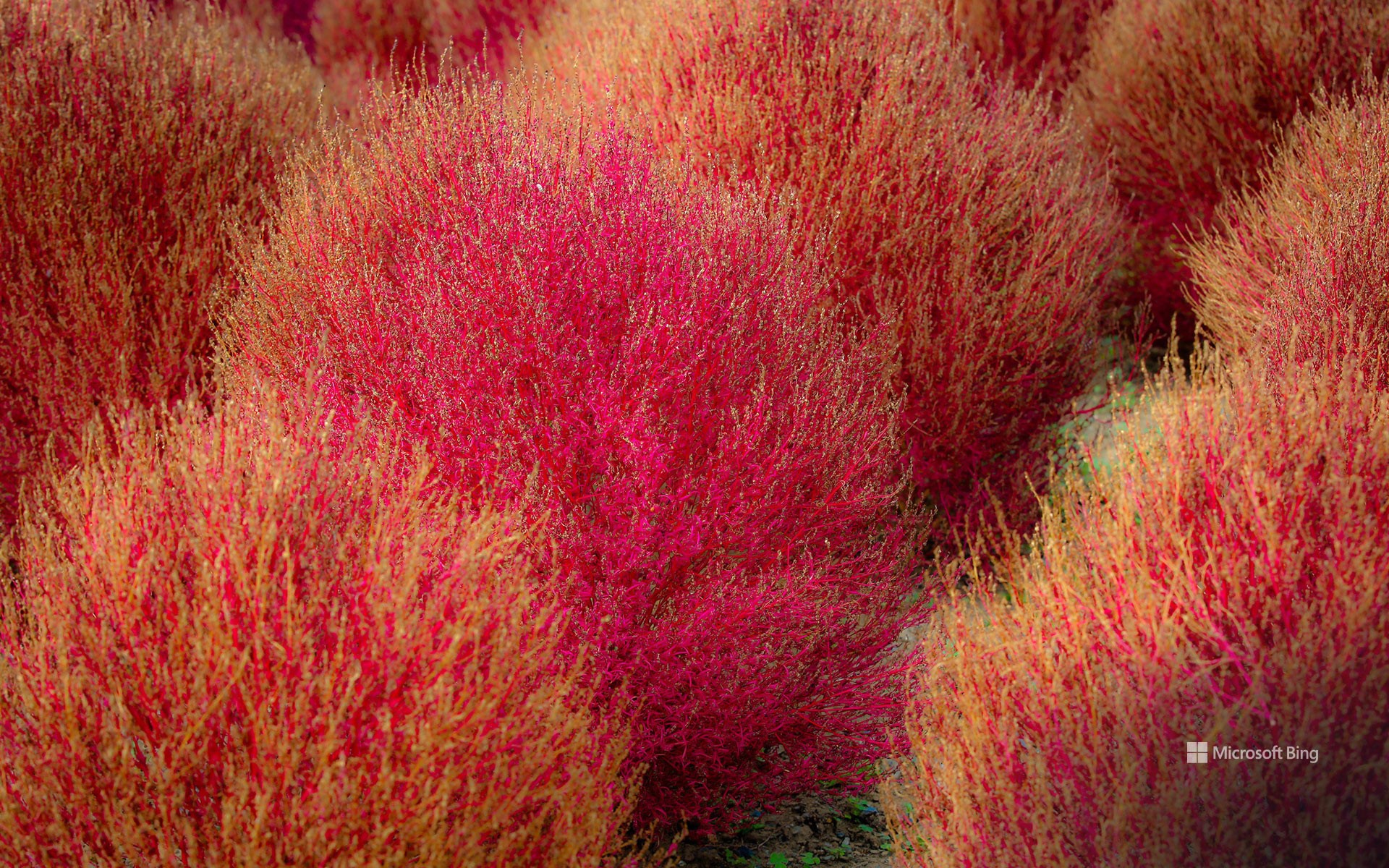
地肤草,茨城县,日本 Kochia, Ibaraki prefecture, Japan (© DigiPub/Getty Images)
随风摆动,进入秋天 Rolling into fall
地肤草,日立海滨公园,茨城县,日本
如果您曾经见过照片中那像火一样的一望无际的红色田野,那您肯定见过地肤草。在春季和夏季,这种一年生草本植物开始呈现出嫩绿色,就像一个蓬松的绿球。随着季节的转换,它的颜色也在变化,会变成红色、橙色甚至粉红色。
地肤草也被称为地肤,原产于欧洲和亚洲的部分地区,如今已遍布世界各地,并且在日本的日立海滨公园找到了一个特殊的家,如今天图片所示。公园里每年种植约3万至4万株地夫草灌木丛,漫步其间,仿佛置身奇异世界。这些观赏植物在日本文化中还具有重要意义。过去,它们被晒干制作成扫帚。不过,也不是所有的部位都注定沦为清扫工具,地肤草还有一些部分可以用在食物中。这种植物的干果——地肤子,又被称为“田野鱼子酱”,是一种珍贵的配菜。
郡上八幡城,岐阜县,日本 Gujō Hachiman Castle, Gifu prefecture, Japan (© ta2funk ito/500px/Getty Images)
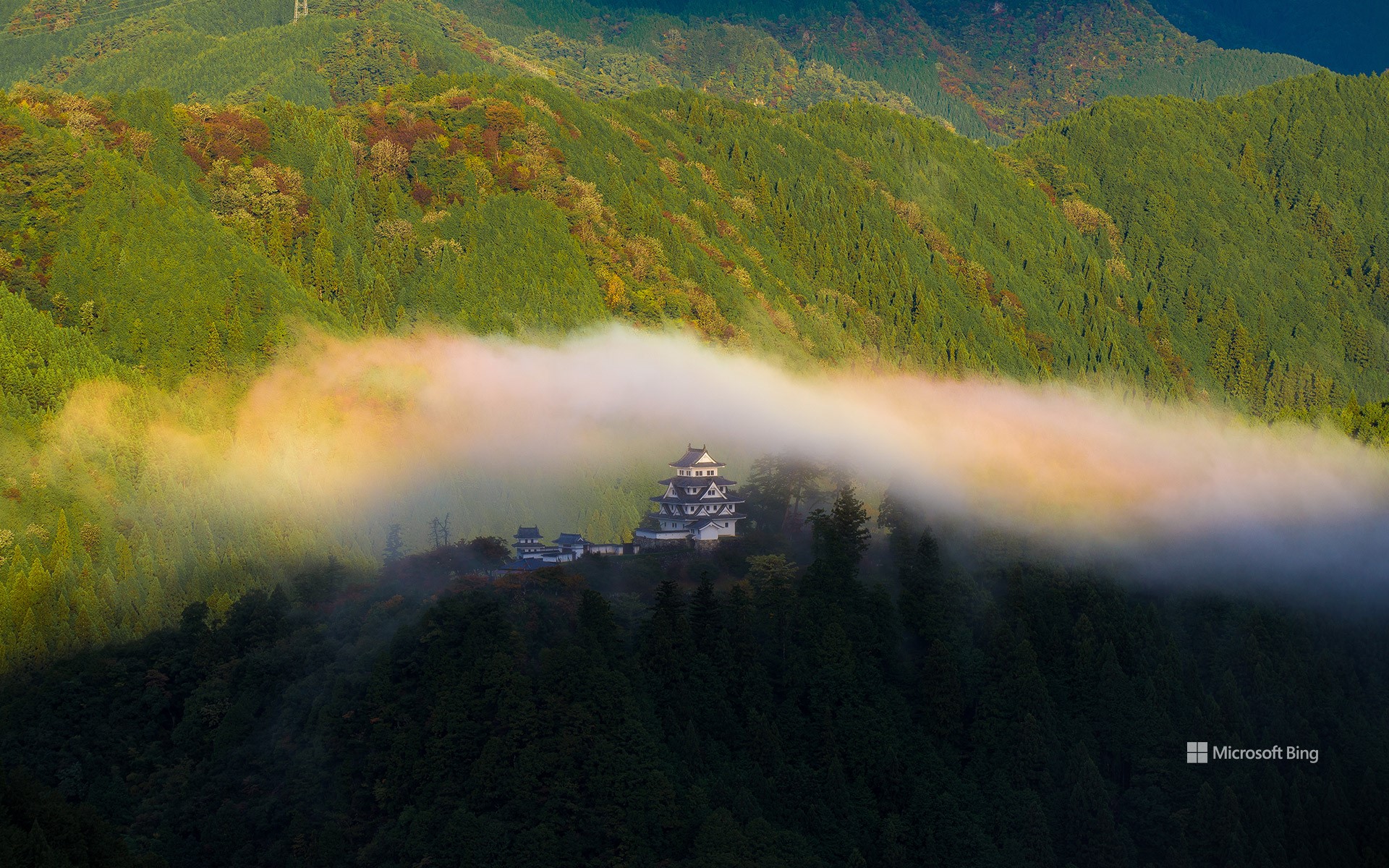
郡上八幡城,岐阜县,日本 Gujō Hachiman Castle, Gifu prefecture, Japan (© ta2funk ito/500px/Getty Images)
云中之城 Castle in the clouds
郡上八幡城,岐阜县,日本
在日本的岐阜县,郡上八幡城雄伟地矗立在八幡山上。它始建于1599年,见证了日本几个世纪的历史,包括大家族的新衰。它在动荡的明治维新时期被拆除——这一时期标志着日本皇权的回归,又于1933年重建。今天图片中看到的城堡,是一个独特的木制重建城堡,在日本多是混凝土重建的城堡中很罕见。这个五层的建筑里设有一座博物馆,在博物馆里,人们可以一窥封建时代的日本,同时还能欣赏下方山谷的壮丽景色。除了城堡,该地还因举办郡上舞祭而闻名,这是日本最古老的舞蹈节之一,它在每年的七月中旬至九月初举行,吸引当地居民和游客在城镇中通宵跳舞,传承着超过400年的传统。
Gujō Hachiman Castle, Gifu prefecture, Japan
In Japan's Gifu prefecture, Gujō Hachiman Castle stands majestically on Hachiman Mountain. Originally constructed in 1559, this castle has witnessed centuries of Japanese history, including the rise and fall of powerful clans. It was torn down during the tumultuous Meiji Restoration—the period that marked the return of imperial power in the country—but was rebuilt in 1933. The castle seen in today's image is a unique wooden reconstruction, a rarity among Japan's often concrete rebuilt castles. This five-story structure, which includes a museum, offers a glimpse into feudal Japan while providing stunning views of the valley below. In addition to the castle, the city of Gujō is also famous for hosting the Gujō Odori, one of Japan's oldest dance festivals. Held annually from mid-July to early September, the festival sees locals and tourists alike dancing through the night in the castle town, preserving a tradition that dates back more than 400 years.
长岛温泉乐园的过山车,三重县,日本 Roller coaster in Nagashima Spa Land, Mie prefecture, Japan (© Japanese amateur photographer/Getty Images)

长岛温泉乐园的过山车,三重县,日本 Roller coaster in Nagashima Spa Land, Mie prefecture, Japan (© Japanese amateur photographer/Getty Images)
系好安全带! Buckle up!
国际过山车日
从单轨到虚拟现实体验,几个世纪以来,过山车一直在为人们带来各种感官刺激。今天是国际过山车日,这是一个完美的借口,可以潜入这些标志性景点的曲折蜿蜒之中。这些游乐设施的起源可以追溯到17世纪的俄罗斯,当时有一种名为“俄罗斯山脉”的木制滑梯,是季节性的娱乐活动设施。然而,我们所熟知的第一个过山车是19世纪初在法国巴黎建造的,它被称为“贝尔维尔俄罗斯山”,其特点是轮式手推车牢牢地固定在轨道上。快进到20世纪,游乐设施飞速发展,并且首次出现了环形过山车。
图为长岛温泉乐园的木质和钢质混合式过山车——日本“白鲸”。这只巨兽曾被称为“白色旋风”,在2019年进行了改造。游乐设施的木质轨道被钢质轨道所取代,它的蜕变不仅加快了速度,将其推向了新的高度,还引入了空中倒转。因此,如果你刚好在日本逗留,请勇敢地乘坐“白鲸”,扣好安全带,冒险一试,然后沉浸在过山车带来的刺激中。
International Roller Coaster Day
From single rails to virtual reality, roller coasters have been thrilling people for centuries. Their origins can be traced back to 17th-century Russia, where wooden slides—'Russian Mountains'—provided seasonal entertainment. The first roller coaster was built in early 19th-century Paris, France. Called 'Les Montagnes Russes à Belleville,' it featured wheeled carts securely attached to tracks. By the 1900s, coasters were looping the loop for the first time.
Pictured here is a hybrid coaster that combines wood and steel—Hakugei, the White Whale of Japan in Nagashima Spa Land. Once known as White Cyclone, this beast underwent a transformation in 2019. The ride's wooden track was replaced with steel. Its metamorphosis not only revved up its velocity and propelled it to new heights but also introduced gravity-defying inversions. So, if you find yourself in Japan, brave the Hakugei—buckle up and take the plunge, and emerge with a tale as epic as the ride itself.
立石公园,神奈川县,日本 Tateishi Park, Kanagawa Prefecture, Japan (© blew_s/Shutterstock)
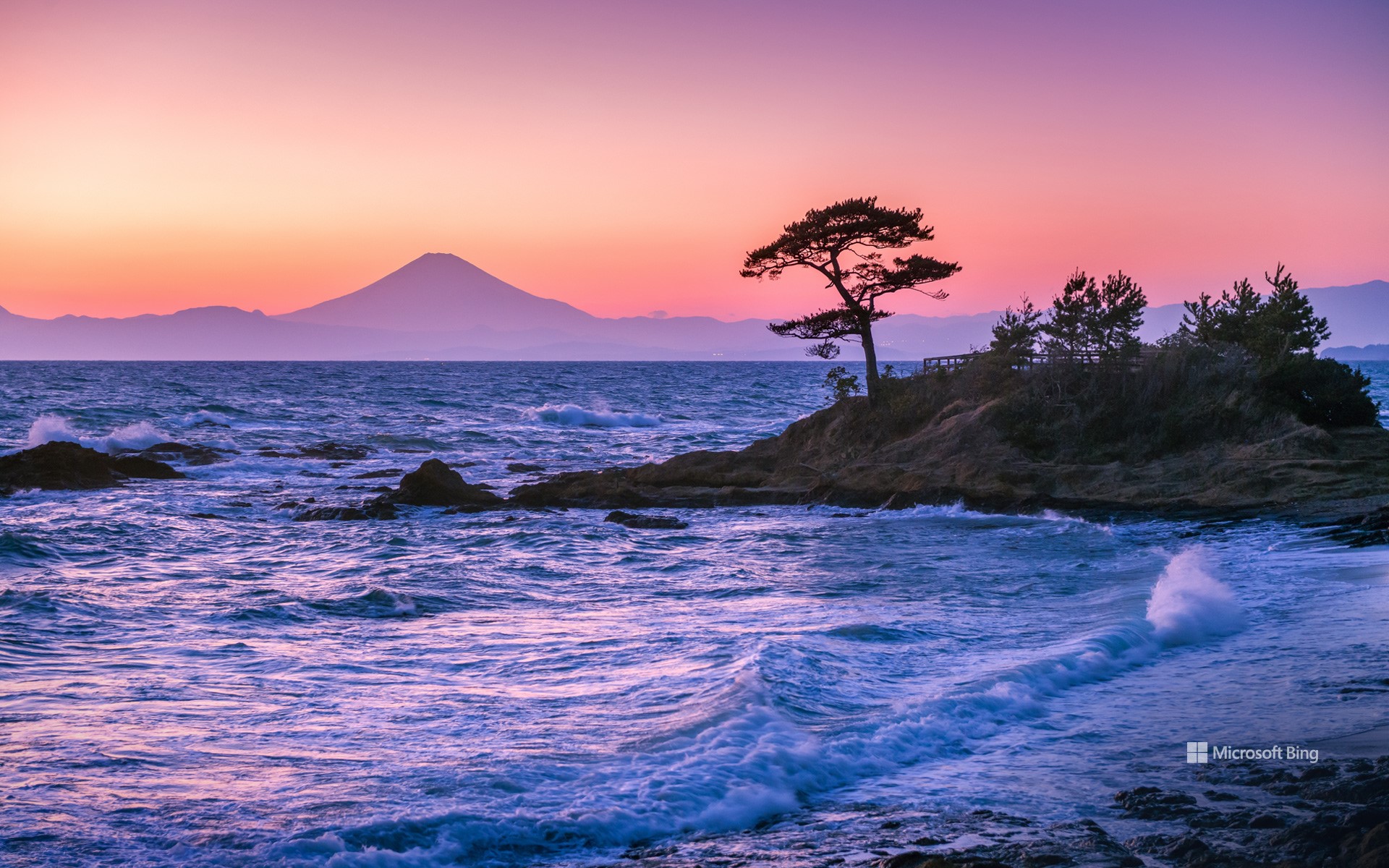
立石公园,神奈川县,日本 Tateishi Park, Kanagawa Prefecture, Japan (© blew_s/Shutterstock)
宁静惬意的海滨风光 Seas the day
立石公园,日本
今天的图片带我们来到横须贺市的立石公园,在这里可以欣赏相模湾和富士山的壮丽景色,是庆祝海洋日的理想场所。立石公园是一个风景优美的海滨公园,历史上曾激发过艺术家和摄影师的创作灵感。
Marine Day, Japan
Today, we're floating across the waves, following the ocean currents to Japan. Marine Day—海の日, Umi no Hi in Japanese—is celebrated on the third Monday in July. Japan has 14,125 islands and has over 18,400 miles of coastline, so it's no wonder the sea plays such a key role in its culture. It provides much of the country's food and is vital for trading and communicating with other nations.
One Marine Day tradition is to give thanks by throwing mud balls into the water; these balls are packed with microorganisms that help to purify the sea. Today's image takes us to Tateishi Park on Japan's largest island, Honshu. This scenic spot has stunning views of Sagami Bay and Mount Fuji, making it the perfect place to celebrate Japan's coastal waters.
姬路城,姫路,兵库县,日本 Himeji Castle, Himeji, Hyōgo Prefecture, Japan (© Julian Elliott Photography/Getty Images)
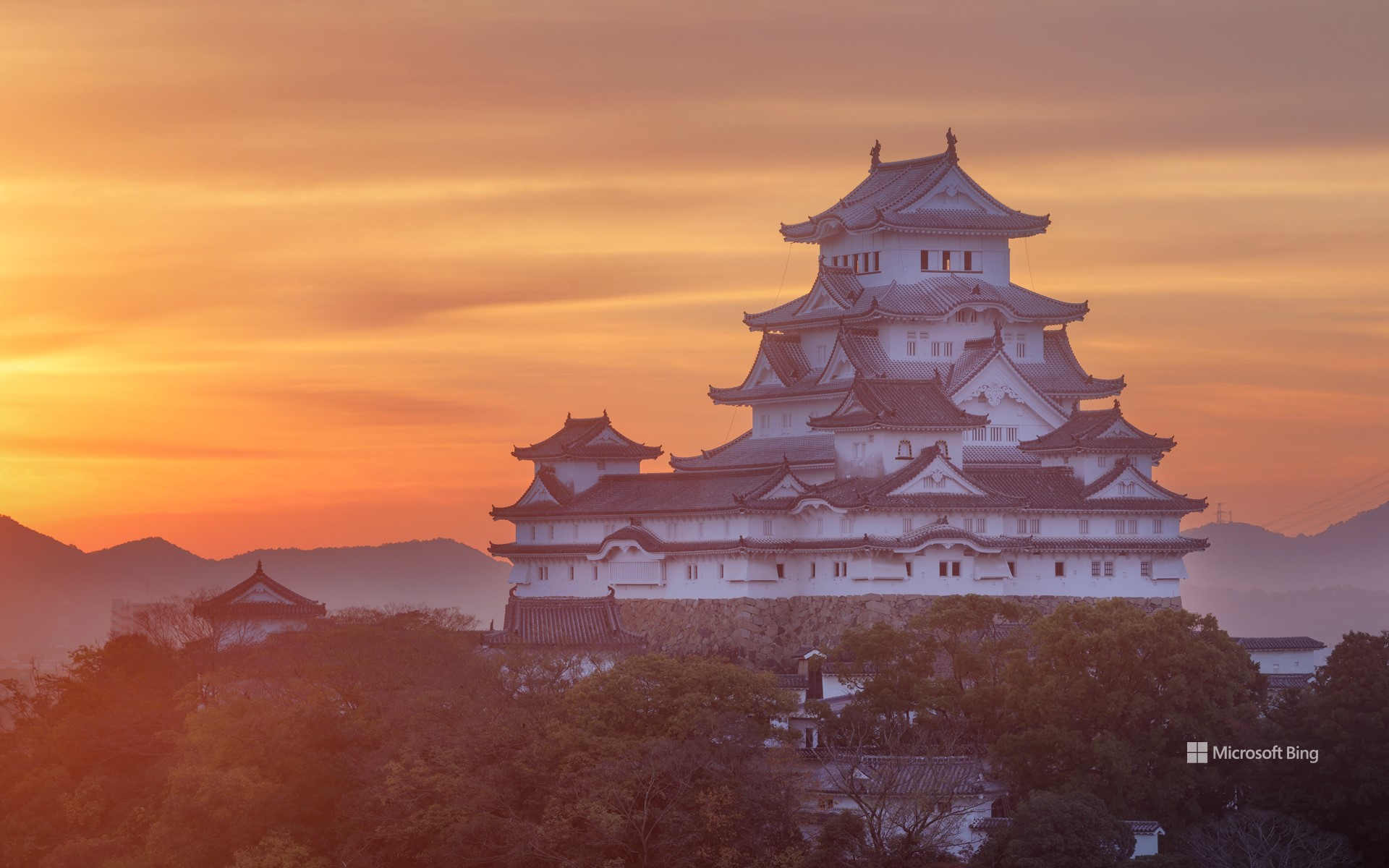
姬路城,姫路,兵库县,日本 Himeji Castle, Himeji, Hyōgo Prefecture, Japan (© Julian Elliott Photography/Getty Images)
皇家景观 A royal view
姬路城,兵库县,日本
从“草莓日”到“猫日”,甚至“蔬菜日”,日本有一系列“谐音节日”,这些节日都来源于駄洒落(一种用读音相同或相近的词汇来玩乐的日本文字游戏,与英语中的双关语类似)。今天的日期是4月6日,而日语中的“shiro”(城堡)这个词恰好是由“shi”(4)和“ro”(6)组成的。因此,这一天就成为了庆祝城堡的日子。还有什么比城堡日更好的机会来了解日本最大、游客最多的城堡——姬路城呢?它的历史可以追溯到1333年,是联合国教科文组织认定的世界遗产,拥有先进的防御设计和五个国宝级建筑。
Castle Day in Japan
From Strawberry Day to Cat Day and even Vegetable Day, Japan has a list of faux holidays, which are the clever results of 'dajare' or word plays. Today's date, April 6, makes up the Japanese word for castle, 'shiro' from 'shi' (4) and 'ro' (6). Hence, the celebration of castles. What better opportunity than Castle Day, to learn about the country's largest and most-visited castle, Himeji Castle? Dating back to 1333, this UNESCO World Heritage Site boasts an advanced defensive design and five National Treasure structures. The castle has also withstood time and nature's fury, surviving the bombings of World War II and the Great Hanshin earthquake in 1995. Nearly 700 years of glory, local legends, and ghost stories reverberate through the 83 rooms of this hilltop fortress. Would you care to explore?
